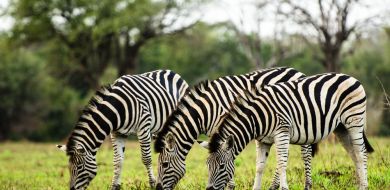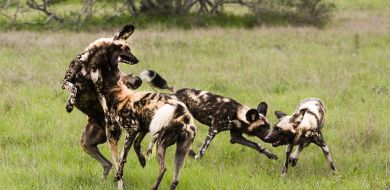Sabi Sabi Wild Facts: Southern White Faced Scops Owl
on Dec 16, 2014The White Faced Scops Owl has been renamed the Southern White-Faced Scops Owl (Ptilopsis granti). It belongs to the family Strigidae, and although it used to be considered a subspecies of the Northern White-Faced owl, these two are now listed as completely separate species.
The Southern White-Faced Scops Owl is a smallish owl easily recognizable by its very striking white facial disc, with a border of black plumage. It has large, bright orange eyes, which are also surrounded with black. (Juveniles have greyish plumage on their faces, and their eyes are yellow). These owls have prominent ear-tufts. Bigger than the Scops Owl, they are on average 25cms in height, weighing around 200gms. The feathers of their upper parts are mostly pale grey: their under parts are lighter and more streaked. The female of the species is larger than the male.

This species is found singly or in pairs. The female will lay a clutch of 2 or 3 eggs in the old stick-nests of many other bird species, including small raptors such as goshawks and kites - or even herons, dove or crow's nests. If these are not available, they will nest in natural tree holes. The 30 day incubation is mainly by the female, although the male may assist. Young chicks will start to fly at roughly 33 days, leaving the nest area two weeks thereafter.
Owls in the Strigidae family all have facial discs which act as "satellite dishes", amplifying and channeling sound directly to their ears. This enables them to hear the slightest sound of potential prey. They hunt mainly by standing quite still, dropping down onto their victims on the ground. These owls are often seen around grassland fires, opportunistically waiting for their meal to be flushed out. Their main diet consists of rodents such as mice, however they will also eat insects and small reptiles and birds.

These nocturnal owls are very well known for their ability to "transform" their shape. If alarmed they have a unique way of escaping detection; they can elongate their bodies and contract their plumage, making themselves taller and thinner - and even lean slightly to further camouflage themselves as branches. At the same time they narrow their very bright eyes into slits, making their faces less visible. To create the illusion of being much larger and more aggressive, they will open and raise their wings, creating a large "semi-circle" around their bodies - and then fluff out their feathers to further increase their apparent size.
Southern White-Faced Scops Owls are found in most of Africa south of the equator, although their range does not include the southern part of South Africa. Their preferred habitat is dry woodland, thornveld, or riverine forest, making Sabi Sabi an ideal breeding ground. During the day they roost in the canopies of trees, their colouration and quiet pose making them very difficult to detect. At night their bubbling hoots or catlike alarm calls will often give away their position, making it easier for rangers and trackers to pinpoint their location.






